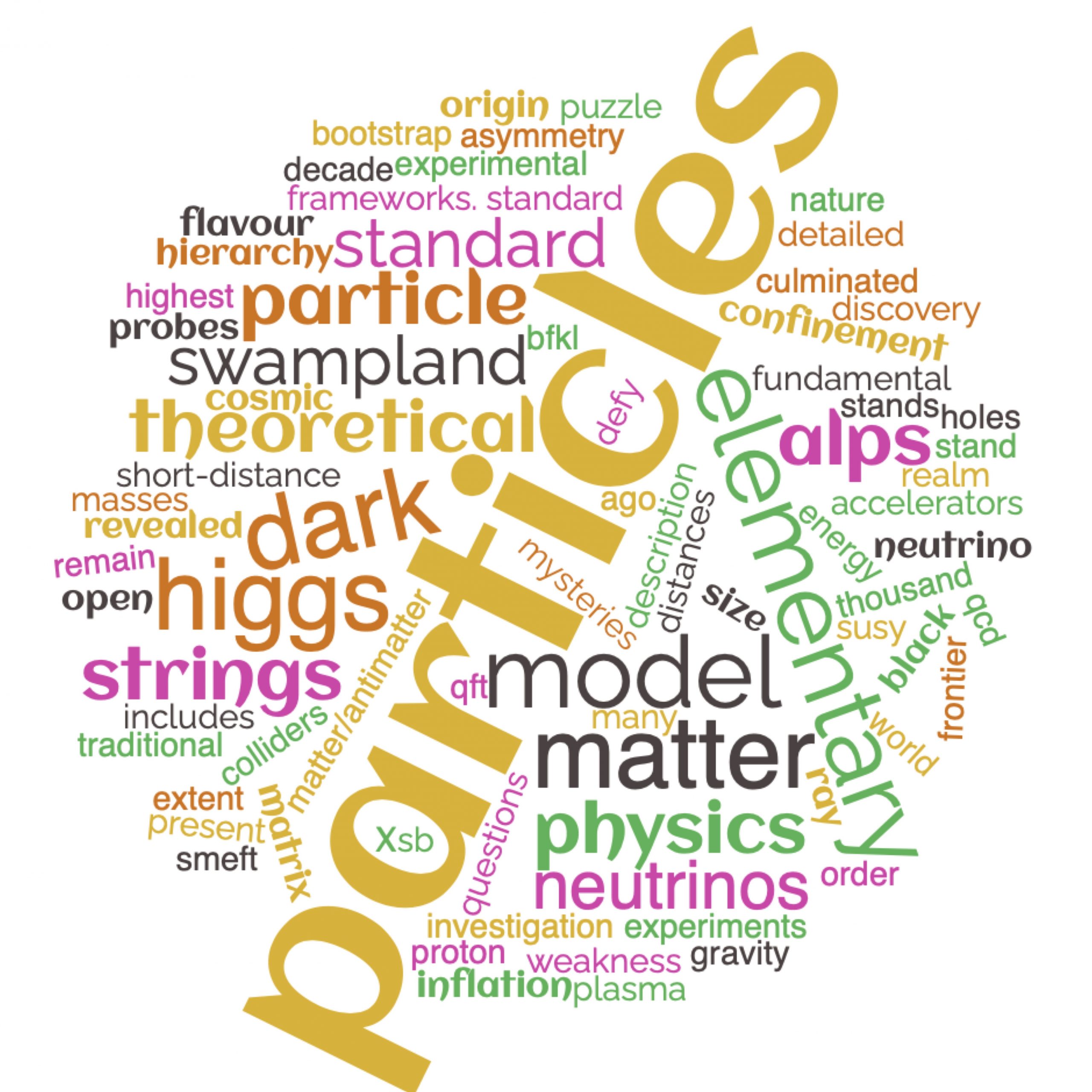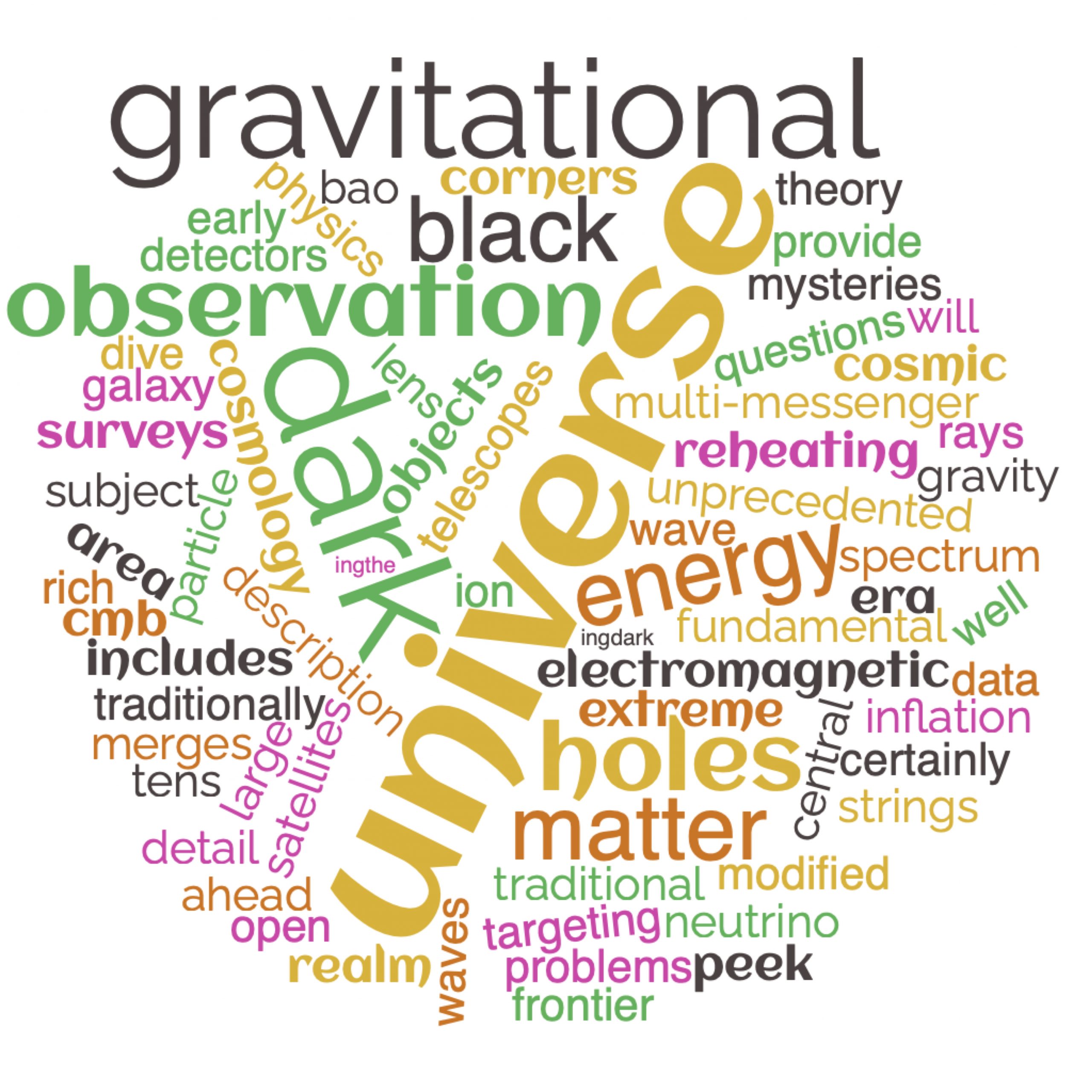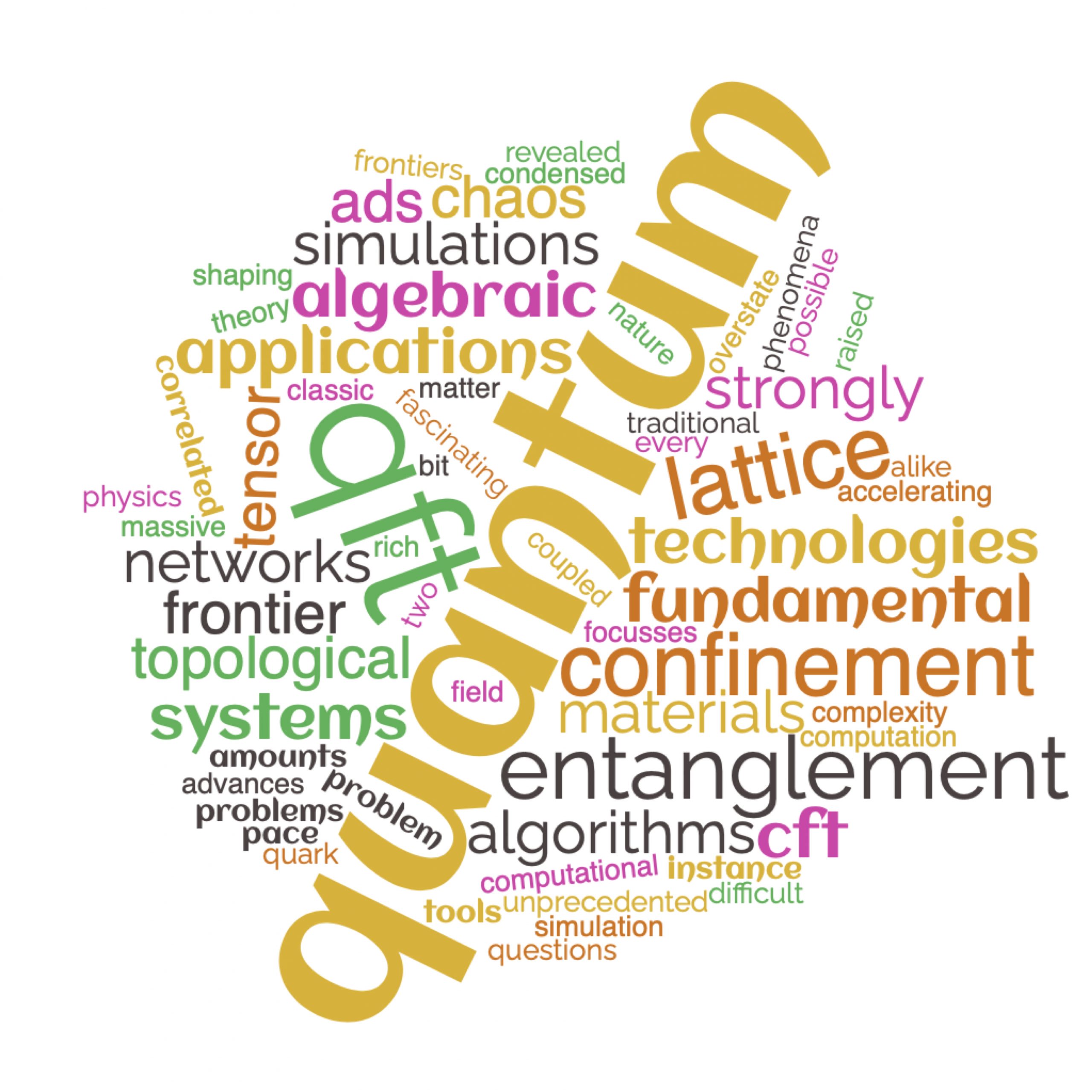Three research frontiers
The Institute of Theoretical Physics IFT targets three research frontiers in Fundamental Physics: the Elementary Particle Frontier, the Universe Frontier and the Quantum Frontier.
The Elementary Particle Frontier encompasses the traditional realm of theoretical investigation of short-range physics, as revealed by the highest-energy experimental probes such as accelerators and cosmic ray experiments. The Standard Model of particle physics is our most fundamental and detailed description of the world down to distances on the order of a thousandth of the size of a proton. The discovery of the Higgs particle about a decade ago culminated to some extent the Standard Model but many open questions remain. The origin of neutrino masses, the puzzle of dark matter, the matter/antimatter asymmetry of nature, the weakness of gravity and many other mysteries continue to defy our current theoretical frameworks.
The Universe Frontier encompasses the traditional domain of cosmology, from the early universe, where the subject traditionally merges with particle physics, to central open questions such as the ultimate nature of dark matter and dark energy. This is an area where observation is ahead of theory, as we enter the data-rich, multi-messenger era of universe exploration. Satellites targeting all corners of the electromagnetic spectrum, neutrino telescopes and gravitational wave detectors will provide a view of the universe in unprecedented detail, allowing theorists to sharpen their conceptual frameworks, from the hypothesized inflationary era to the ultimate fate of the expanding universe, and to peer into some of the most extreme phenomena, such as black holes.
Finally, the Quantum Frontier focuses on the nature and applications of systems with massive amounts of quantum entanglement, such as those found in strongly correlated condensed matter systems, or the traditional questions raised by strongly coupled phenomena in quantum field theory, such as the classic problem of quark confinement. Progress in quantum computation and simulation is accelerating at an unprecedented rate, and the potential applications to both computational tools and fundamental problems are hard to overestimate. The frontier of quantum complexity is shaping up to be as rich and fascinating as the other two fundamental frontiers of physics.
In recent decades, a surprising network of synergies has developed between these three frontiers. In many cases, this was more or less dictated by the nature of the problems at hand, such as the physics of the early universe or the mystery of dark matter. In other cases, the connection was less obvious, such as the impact of the discovery of dark energy on the purely speculative construction of string theory; or the discovery of holography in the context of quantum black holes and string theory, bridging quantum information theory, quantum field theory and general relativity.
Our research groups
The IFT has four research groups, three of which are roughly aligned with the three broad frontiers described above: Particle Physics, Cosmology and Strongly Quantum Systems. A fourth, with a more mathematical inclination, focuses on more speculative topics around the classic problem of building a quantum theory of gravity, with a strong emphasis on ideas from string theory and holography. Research in these more speculative areas actually interacts with the three broad frontiers at the same time.
Particle Physics in the Standard Model and Beyond
This research group focuses on central questions related to elementary particles. This includes the Higgs boson, modelling beyond the Standard Model, and constraints from current and future colliders. It also includes the study of flavour physics and neutrino masses and mixing as revealed by neutrino oscillation experiments. Other intertwined topics relate to particle physics proposals with implications for astroparticle physics and cosmology, for instance those of axion-like particles.
These strategic areas are expected to remain at the forefront of research in the coming years, given the upcoming experiments. The theoretical study of the Higgs boson and its interactions is key to Run 3 of the LHC. Similarly, theoretical work to determine neutrino parameters is crucial for upcoming neutrino experiments, such as HyperKamiokande and later DUNE.
Origin and Composition of the Universe: Astroparticles and Cosmology
This area of research merges with astrophysics at one end and with the deepest questions on the nature of space and time at the other. The field is in the midst of a complete revolution, initiated in the last two decades by the wealth of precision data from observatories on Earth and in space, and continuing with the detection of gravitational waves and their use to address fundamental questions in cosmology and gravitational theories. The medium to long term strategy is dominated by the exploration of these new phenomena to turn them into precision tools in the emerging field of multi-messenger astronomy to study the dark side of the Universe.
The Astroparticles and Cosmology group at the IFT focuses on elucidating the nature and properties of dark matter from the perspectives of astrophysics and particle physics, and on unravelling the nature and properties of dark energy, together with improving models of inflation. The work of the group ranges from sophisticated theoretical speculations to data analysis in a wide variety of experimental collaborations to which it is linked, such as Virgo, KAGRA, LISA, Einstein Telescope, DES, DESI, Euclid, LSST, Paus, SKA, CTA, Fermi-LAT, COMPACT, (super)CDMS, MIGDAL and others.
Quantum Matter and Fields
This area is characterised by the exploration of systems with intense manifestation of quantum collective phenomena. This confronts fundamental physics, at different energy scales, with the challenges of complexity, and represents a vast and interdisciplinary area, explored by powerful tools in Quantum Field Theory (QFT) and Quantum Information (QI).
The Quantum Matter and Fields group at IFT has several focal points. One deals with the study of strongly interacting systems in particle physics, such as quantum chromodynamics (QCD), using lattice approximations. Another deals with the interplay of the field of quantum computation and quantum information with many-body systems in theoretical condensed matter physics. Both areas offer timely opportunities, ranging from the increasing demand for precise predictions in flavour physics, to the use of novel techniques, such as gravitational holography, to address new quantum states of matter, and to the exciting and rapidly developing area of topological materials, quantum algorithms, novel physical realisations of qubits, and their interplay in quantum computing devices.
Strings and Quantum Gravity
This domain of research explores the unification of matter and space-time, largely from the point of view of string theory and also through the general idea of gravitational holography, exhibiting synergies with the rest of IFT groups either directly (as ultra-high-energy particle physics) or at the level of methodology, and smoothly connects with vibrant research areas of pure mathematics. It is the most open-ended of research lines, a kind of pure theoretical exploration, guided by the very restrictive constraint of consistency of principles.
The group focuses on models of particle physics and cosmology based in string theory and links with the Elementary Particles and Astro/Cosmo areas, particularly through the so-called Swampland program. Furthermore, it deals with mathematical investigations of gravity in general and black holes in particular, as well as broad questions in holography. In this way, it touches on open questions of collective phenomena in strongly coupled quantum systems, naturally merging with the Quantum area.
Who are we and what do we do? And why do we do it? In this video, IFT researchers explain life at the institute, their fields of research and their vision of physics and scientific research in general.


